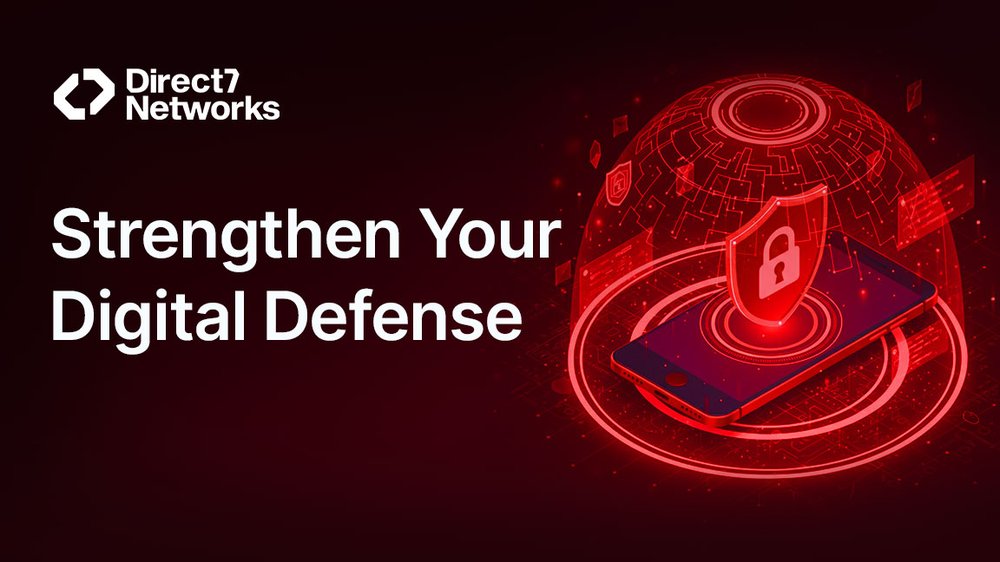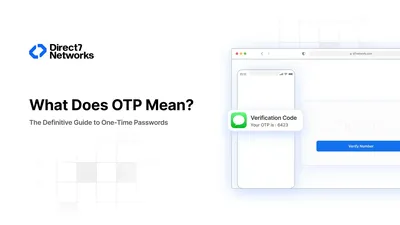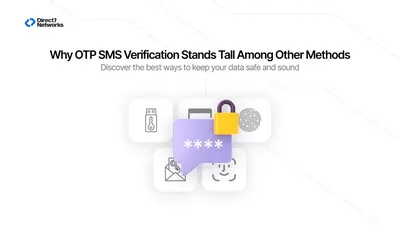
Enhancing Cybersecurity Awareness with OTP Verification
Discover How OTPs play a pivotal role in safeguarding your digital world and enhancing your awareness of ever-evolving cyber threats.
There’s no silver bullet solution with cybersecurity; a layered defense is the only viable defense - James Scott
James Scott
In the ever-evolving landscape of information technology, the importance of cybersecurity cannot be overstated. With the rapid advancements in technology, we find ourselves facing both the convenience of the digital age and the ever-looming challenges it presents, particularly in safeguarding our data.
Cybersecurity Awareness Month - A Milestone
October marks Cyber Security Awareness Month, an annual campaign aimed at fostering awareness of cybersecurity in both personal and professional spheres.
The Essence of Digital Trust
Digital trust, the cornerstone of our online interactions, is under constant threat as technology advances. Recognizing these mounting risks, the U.S. President and Congress declared October as Cybersecurity Awareness Month back in 2004. This initiative underscores the importance of personal responsibility in safeguarding online security.
Understanding Cybersecurity Awareness
Cybersecurity awareness isn't merely a buzzword; it's an essential education about the cunning strategies deployed by cybercriminals. It empowers individuals to comprehend how they can be targeted, recognize potential threats, and take measures to protect themselves from these insidious dangers.
Defending Against Cyber attacks
At the heart of cybersecurity lies the protection of systems, networks, and programs against cyberattacks. Cybercriminals aim to alter, manipulate, block, delete, or steal data, often disabling, disrupting, or controlling entire systems. To effectively safeguard your digital realm, it's crucial to understand the various forms of cyberattacks and how to prevent them.
1. Malware Attacks
Malware, or malicious software, is a common cyber threat. It encompasses a variety of malicious programs, including viruses, worms, Trojan horses, ransomware, spyware, and adware. To defend against these attacks, implement firewalls, use reliable antivirus software, exercise caution when clicking on unknown links, and maintain regular computer updates.
2. Password Attacks
Password attacks involve attempts to gain access to password-protected accounts. These attacks often employ password-cracking or guessing software. Strengthen your defenses by creating complex passwords with alphanumeric characters, using different passwords for various logins, and changing them regularly. Consider implementing two-step authentication and verification to bolster your account security, making it more challenging for attackers to compromise your credentials.
3. Denial-of-Service (DoS) Attacks
DoS attacks seek to disrupt or shut down a machine or network, rendering it inaccessible. Attackers flood network servers with traffic, causing overloads. To thwart these attacks, conduct traffic analysis to identify malicious traffic patterns. Be vigilant for signs of network slowdowns and intermittent website shutdowns, and take immediate action when necessary.
4. Phishing Attacks
Phishing attacks involve fraudulent communications that appear trustworthy, often through email. These attacks aim to steal sensitive information or infect devices with malware. Protect yourself by scrutinizing emails for errors, such as spelling and formatting discrepancies. Change your passwords regularly, and use anti-phishing tools. Employ two-factor customer verification, where a one-time password (OTP) is sent via SMS for added security against attacks like debit and credit card spoofing.
5. Man-in-the-Middle (MitM) Attacks
MitM attacks occur when intruders intercept two-party transactions, enabling them to filter and steal data. Protect yourself by understanding the security measures in place on the websites you visit and using encryption when accessing public Wi-Fi networks.
The Role of SMS OTP in Cybersecurity
SMS One-Time Passwords (OTPs) are a vital component of modern cybersecurity. They provide a secure and efficient means of verifying user identities. OTP sent by SMS is the most secure form of verification. The business can send the code instantly, and the customer can verify themselves quickly. Since the validity of an OTP is only for a few seconds, SMS is the most effective channel to send it.
The D7 Verifier API further enhances security, ensuring verified transactions and secure logins.
In conclusion, cybersecurity is a multi-layered defense, a digital fortress that safeguards our online presence. By staying informed, implementing security best practices, and leveraging technologies like SMS OTPs, we can fortify our digital realm against the ever-persistent threat of cyberattacks. By embracing these strategies, we can navigate the digital age with confidence and resilience.




